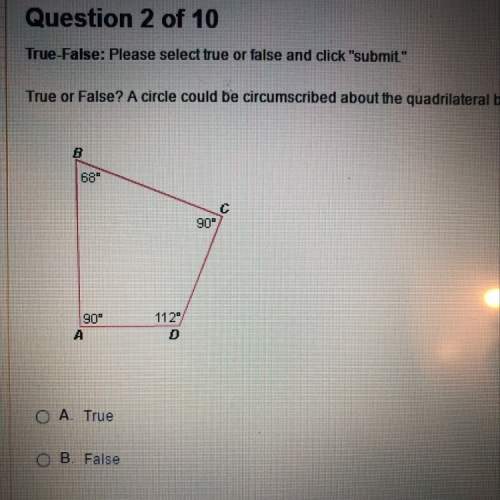
Mathematics, 29.01.2020 15:02 kcarstensen59070
Example 5 suppose that f(0) = −8 and f '(x) ≤ 9 for all values of x. how large can f(3) possibly be? solution we are given that f is differentiable (and therefore continuous) everywhere. in particular, we can apply the mean value theorem on the interval [0, 3] . there exists a number c such that f(3) − f(0) = f '(c) − 0 so f(3) = f(0) + f '(c) = −8 + f '(c). we are given that f '(x) ≤ 9 for all x, so in particular we know that f '(c) ≤ . multiplying both sides of this inequality by 3, we have 3f '(c) ≤ , so f(3) = −8 + f '(c) ≤ −8 + = . the largest possible value for f(3) is .

Answers: 1


Other questions on the subject: Mathematics

Mathematics, 21.06.2019 18:00, leianagaming
Describe the relationship between the angles of similar triangles and the sides of similar triangles
Answers: 1


Mathematics, 21.06.2019 22:50, kaylarojascliff
On the first of each month sasha runs a 5k race she keeps track of her times to track her progress her time in minutes is recorded in the table
Answers: 1

Mathematics, 22.06.2019 00:50, richard80
Match the following reasons with the statements given to create the proof. 1. do = ob, ao = oc sas 2. doc = aob given 3. triangle cod congruent to triangle aob vertical angles are equal. 4. 1 = 2, ab = dc if two sides = and ||, then a parallelogram. 5. ab||dc if alternate interior angles =, then lines parallel. 6. abcd is a parallelogram cpcte
Answers: 3
You know the right answer?
Example 5 suppose that f(0) = −8 and f '(x) ≤ 9 for all values of x. how large can f(3) possibly be?...
Questions in other subjects:

English, 21.08.2019 06:10

Mathematics, 21.08.2019 06:10




Mathematics, 21.08.2019 06:10

Physics, 21.08.2019 06:10


History, 21.08.2019 06:10

Mathematics, 21.08.2019 06:10

 exists and is bounded for all
exists and is bounded for all  . We're told that
. We're told that  . Consider the interval [0, 3]. The mean value theorem says that there is some
. Consider the interval [0, 3]. The mean value theorem says that there is some  such that
such that
 , we have
, we have



